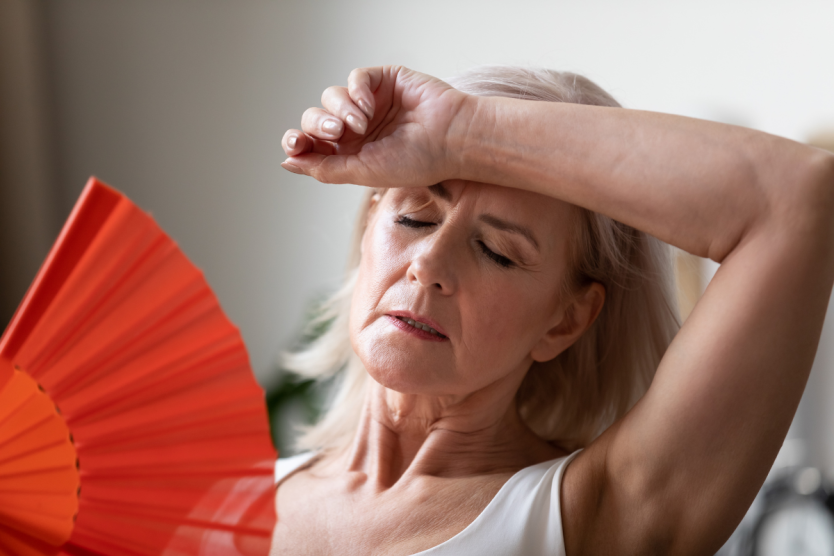If you’re in the throes of menopause and tired of the hot flashes and night sweats, you’re likely wondering how long do menopause symptoms last.
Let’s take a look.
What is Menopause
We’ve all heard the jokes about menopause, in particular common side effects like those notorious hot flashes. Menopause is no laughing matter, however. It’s a natural biological process, and for some women, it’s not a lot of fun.
The months or years leading up to menopause—known as perimenopause—can bring on signs like irregular periods. You might skip a month and then get your period again, or skip several months and then start monthly cycles again for a few months. Your periods might happen on shorter cycles, so they are closer together.1
Menopause, however, is diagnosed after you’ve gone 12 months without a period. Menopause can happen in your 40s or 50s, but the average age in the United States is 51 years old.1
Menopause can also be triggered by a hysterectomy if it includes surgical removal of the ovaries, which produce hormones. Without ovaries, you will experience symptoms of menopause immediately.2
How Long Do Menopause Symptoms Last
While menopause itself is considered that point in time 12 months after your last period, the years leading up to that point can lead to menopause symptoms that can last for years. Perimenopause, also known as menopausal transition, most often begins between ages 45 and 55, and usually lasts about seven years—but it can be as long as 14 years.2
The duration of the transition can depend on lifestyle factors such as smoking, the age it begins, and race and ethnicity. During perimenopause, the production of estrogen and progesterone by the ovaries can vary greatly. As a result, this transition can affect each woman uniquely and in various ways.2
That variety in impact means that women can suffer with different side effects—the list of possible symptoms is long—and for varying lengths of time. So there’s no single, simple answer to the question of how long do menopause symptoms last. The length and extent of side effects can vary widely from one woman to the next.3
For instance, the North American Menopause Society reports that hot flashes, what they call the “hallmark symptom” of menopause, affects as many as 75% of North American women during perimenopause. It goes on to state that most women experience hot flashes for 6 months to 2 years, although some reports suggest that they last considerably longer—as long as 10 years, depending on when they began.4
For a small proportion of women, hot flashes may never go away. It is not uncommon for women to experience a recurrence of hot flashes more than 10 years after menopause, even into their 70s or beyond. As such, there is no reliable way of predicting when menopause symptoms will start—or stop.4
In general, then, side effects of menopause can start months or even years before your periods stop and can last for years after.5 Symptoms can also change with time. Some side effects may improve, while others may crop up, or some may carry on long after your periods stop.6
The onset of menopause can also mean an increase in the risk of certain medical conditions. It’s important to stay up to date on yearly exams, such as mammograms and screening for breast cancer, and screening tests for osteoporosis.4
See a Doctor
Menopause is natural, but the side effects can be difficult at times. If you want relief, or you’re wondering how long your symptoms will last, use our Physician Finder to find a doctor near you with expertise in women’s health. A doctor can suggest treatment options and support your well-being as you go through this natural transition.
















